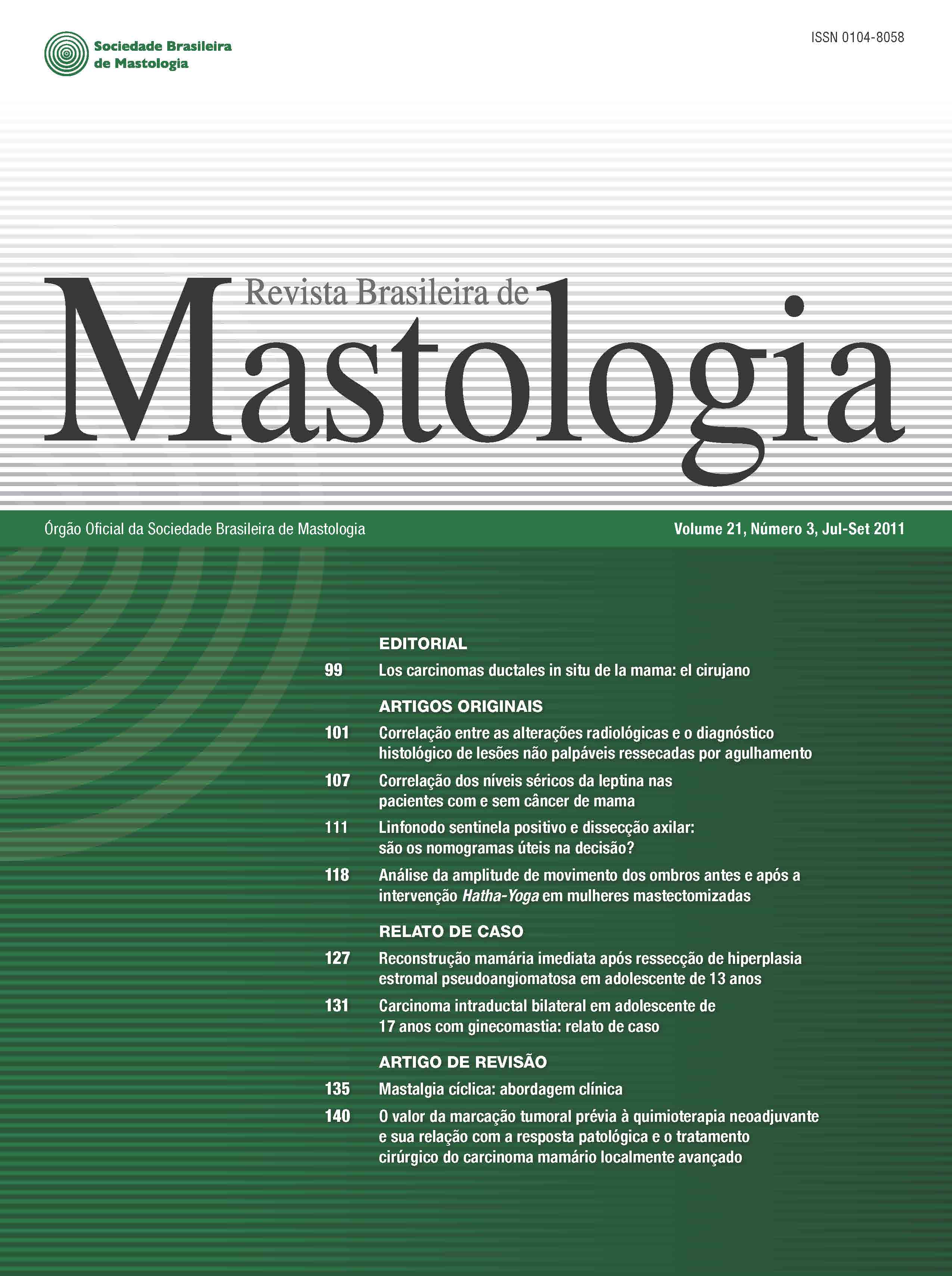Correlation between radiological change and histological diagnosis of non-palpable breast lesions submitted a surgical excision after wire localization
Keywords:
Breast cancer, Diagnosis, Surgery, MammographyAbstract
Objective: The study aimed to evaluate BI-RADS® as predictor of malignancy in non-palpable breast lesions and indication for surgery resection through the correlation between radiological findings and histological diagnosis. Methods: Retrospective study analytical type involving 99 women undergoing 100 surgical biopsy needle guided, marked pre surgically by mammography or ultrasound, from January to October 2010. Results: Of the total 100 cases examined, 47% presented as microcalcifications, 46% as solid mass, 5% as solid mass associated with microcalcifications, 1% as focal assimmetry, and 1% as parenchymal distortion. Histological analysis confirmed the diagnosis of benign lesions, characterized by fibrocystic disease, hyperplasia without atypia, simple adenosis, ductal ectasia and fibroadenomas, in 37% of cases. High risk for malignacy lesions, represented in this study, by hyperplasia with atypia, sclerosing adenosis, radical scar, papilloma complex and phyllodes tumor added 16%. Non invasive carcinoma was found in 11% and infiltrative carcinoma in 36%. The mammographic findings related malignant lesions were: 80% of solid mass with microcalcifications, 51,8% of solid mass and 40,3% of microcalcifications. Malignant lesions were found in 42% of lesions classified as BI-RADS® 4 and 78,5% as lesions classified as BI-RADS® 5. Conclusion: It was concluded that the BI-RADS® system can be used as a predictor of malignancy in nonpalpable breast lesions classified as category 4 and 5 of BI-RADS®, surgery resection was surely indicated in 63% of patients and in 72,4% of the pacients with diagnosis of malignancy the same procedure was diagnostic and therapeutic.










